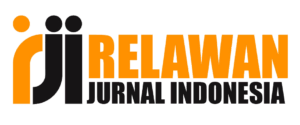Property Database Integration Using Schema Matching with Linguistic and Constraint
DOI:
https://doi.org/10.30812/bite.v7i1.4872Keywords:
Constraint, Integrasi Basis Data, Linguistic, Properti, Schema MatchingAbstract
Background: The rapid development of technology has driven progress across various sectors, including the property industry in Indonesia. However, property data integration on Lombok Island still faces challenges due to the diversity of attribute naming, which hinders efficient information retrieval.
Objective: This study aims to integrate four property databases (Saduthama, Salva, SJP, and Garden View) using a schema matching method based on linguistic and constraint approaches.
Methods: The linguistic approach is used to identify similarities between attributes, even when their names differ, using the Bigram technique, which proved effective in identifying attribute similarities with a threshold of 0.7. Meanwhile, the constraint approach evaluates the compatibility of attributes based on additional criteria such as data type, attribute length, null values, and uniqueness, ensuring that the integrated attributes work compatibly. The integration process includes preprocessing, generalization, and attribute matching.
Result: The evaluation results show precision (P), recall (R), and F-measure of 90%, with an average accuracy of 84%.
Conclusion: This result outperforms previous studies that achieved 100% precision, 60% recall, and 75% F-measure.
Downloads
References
[1] J. Okto dan S. Hendraputra, “Perancangan Sistem informasi Pemasaran Rumah pada PT.Nakama Berbasis
Web dengan Menggunakan Metode Waterfall,” REMIK: Riset dan E-Jurnal Manajemen Informatika
Komputer, vol. 6, no. 2, pp. 304–317, Jul. 2022. doi: 10.33395/remik.v6i2.11547.
[2] I. H. Primananda, N. Santoso, dan A. Rachmadi, “Pengembangan Sistem Marketplace Tanah dan Property
BerbasisWeb dengan Pendekatan Rapid Application Development (RAD),” Jurnal Pengembangan Teknologi
Informasi dan Ilmu Komputer, vol. 4, no. 1, pp. 200–206, Feb. 2020.
[3] D. N. Kholifah et al., “Perancangan Program Absensi Karyawan Berbasis Web Menggunakan Metode
Waterfall Pada PT Kedai Sayur Indonesia,” Indonesian Journal on Software Engineering (IJSE), vol. 8,
no. 1, pp. 115–124, Jun. 2022. doi: 10.31294/ijse.v8i1.13025.
[4] O. Prasetyo dan W. G. Aedi, “Implementasi Teknologi Augmented Reality Untuk Bisnis Properti Rumah
Menggunakan Metode Markerless Berbasis Android (Studi Kasus CV. Tomsland),” Jurnal Informatika
MULTI, vol. 1, no. 4, pp. 275–284, 2023.
[5] A. Nurzukhrufa, W. D. Satria, dan M. K. Dewi, “Strategi Pemasaran Pengembang Perumahan Saat Pandemi
Covid-19 di Kota Bandar Lampung,” Jurnal Maksipreneur: Manajemen, Koperasi, dan Entrepreneurship,
vol. 12, no. 1, p. 45, Jul. 2022. doi: 10.30588/jmp.v12i1.882.
[6] S. Raharjo, E. Utami, dan O. M. A. Alsyaibani, “Metode Schema Matching berbasis Linguistic dan
Constraint untuk Integrasi Database di Sekolah,” Jurnal Edukasi dan Penelitian Informatika (JEPIN),
vol. 8, no. 2, p. 311, Aug. 2022. doi: 10.26418/jp.v8i2.55852.
[7] M. Shrestha et al., “Schema Matching and Data Integration with Consistent Naming on Protein Crystallization
Screens,” IEEE/ACM Transactions on Computational Biology and Bioinformatics, vol. 17, no. 6,
pp. 2074–2085, Nov. 2020. doi: 10.1109/TCBB.2019.2913368.
[8] K. Christianto et al., “Pengembangan Sistem Aplikasi Manajemen Properti Bagian Penyewaan Unit
(Studi Kasus: PT. Satrand Group Indonesia),” Infotech: Journal of Technology Information, vol. 9, no. 1,
pp. 37–42, Jun. 2023. doi: 10.37365/jti.v9i1.156.
[9] H. Gunawan dan A. Maslan, “Aplikasi Promosi Properti Berbasis Web Menggunakan Metode Waterfall,”
Computer and Science Industrial Engineering (COMASIE), vol. 6, no. 2, pp. 80–87, Jan. 2022.
[10] D. A. Herman, “Perancangan dan Pengembangan Aplikasi Jual Beli Properti Berbasis Web dengan Metode
SDLC (Studi Kasus: PT Limitra Indonesia Mega),” Journal of Information System and Technology, vol. 3,
no. 2, p. 35, Jul. 2022. doi: 10.37253/joint.v3i2.6755.
[11] A. E. Permanasari et al., “Pengembangan Basis Data Sistem Informasi Manajemen Rumah Sakit Berbasis
Linguistic-based Schema Matching,” Jurnal Nasional Teknik Elektro dan Teknologi Informasi (JNTETI),
vol. 8, no. 2, p. 101, May 2019. doi: 10.22146/jnteti.v8i2.498.
[12] R. Hammad et al., “Optimization of data integration using schema matching of linguistic-based and
constraint-based in the university database,” Matrix : Jurnal Manajemen Teknologi dan Informatika,
vol. 11, no. 3, pp. 119–129, Nov. 2021. doi: 10.31940/matrix.v3i11.119-129.
[13] A. Gal, H. Roitman, dan R. Shraga, “Learning to Rerank Schema Matches,” IEEE Transactions on
Knowledge and Data Engineering, vol. 33, no. 8, pp. 3104–3116, Aug. 2021. doi: 10.1109/TKDE.2019.
2962124.
[14] C. Ma et al., “Knowledge Enriched Schema Matching Framework for Heterogeneous Data Integration,” in
2022 IEEE 2nd Conference on Information Technology and Data Science (CITDS), Debrecen, Hungary:
IEEE, May 2022, pp. 183–188. doi: 10.1109/CITDS54976.2022.9914350.
[15] X. Du et al., “RESIN-11: Schema-guided Event Prediction for 11 Newsworthy Scenarios,” in Proceedings
of the 2022 Conference of the North American Chapter of the Association for Computational Linguistics:
Human Language Technologies: System Demonstrations, Hybrid: Seattle, Washington + Online: Association
for Computational Linguistics, 2022, pp. 54–63. doi: 10.18653/v1/2022.naacl-demo.7.
[16] M. Tamer ¨ Ozsu dan P. Valduriez, “Correction to: Principles of Distributed Database Systems,” in
Principles of Distributed Database Systems. Cham: Springer International Publishing, 2020, pp. C1–C2.
doi: 10.1007/978-3-030-26253-2_13.
[17] I. R. Mukhlis dan R. Santoso, “Perancangan Basis Data Perpustakaan Universitas Menggunakan MySQL
dengan Physical Data Model dan Entity Relationship Diagram,” Journal of Technology and Informatics
(JoTI), vol. 4, no. 2, pp. 81–87, Apr. 2023. doi: 10.37802/joti.v4i2.330.
Downloads
Published
Issue
Section
License
Copyright (c) 2025 Muhammad Hariri, Bambang Krismono Triwijoyo, Gallih Hendro Martono

This work is licensed under a Creative Commons Attribution 4.0 International License.














